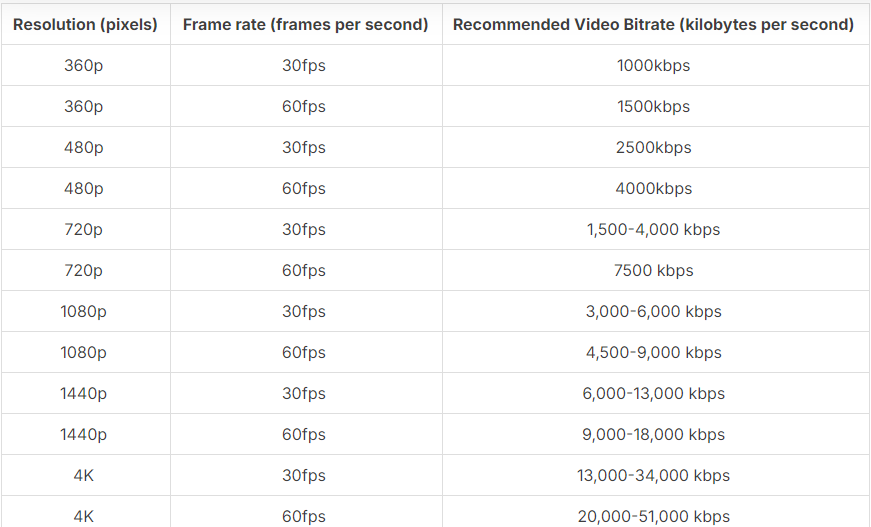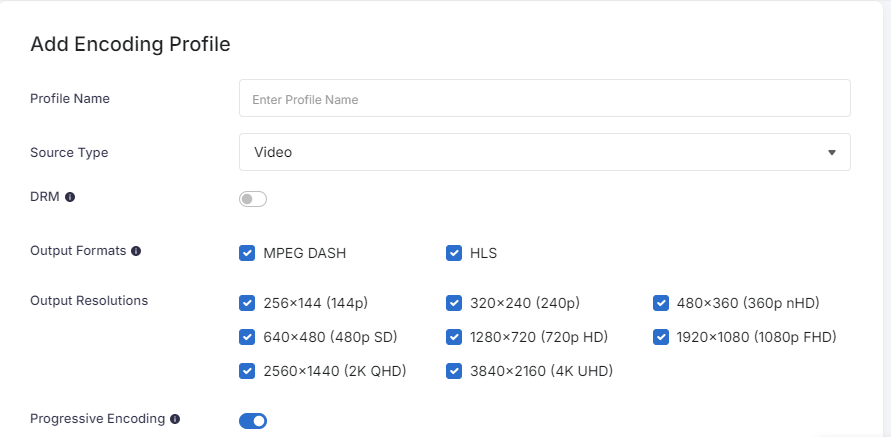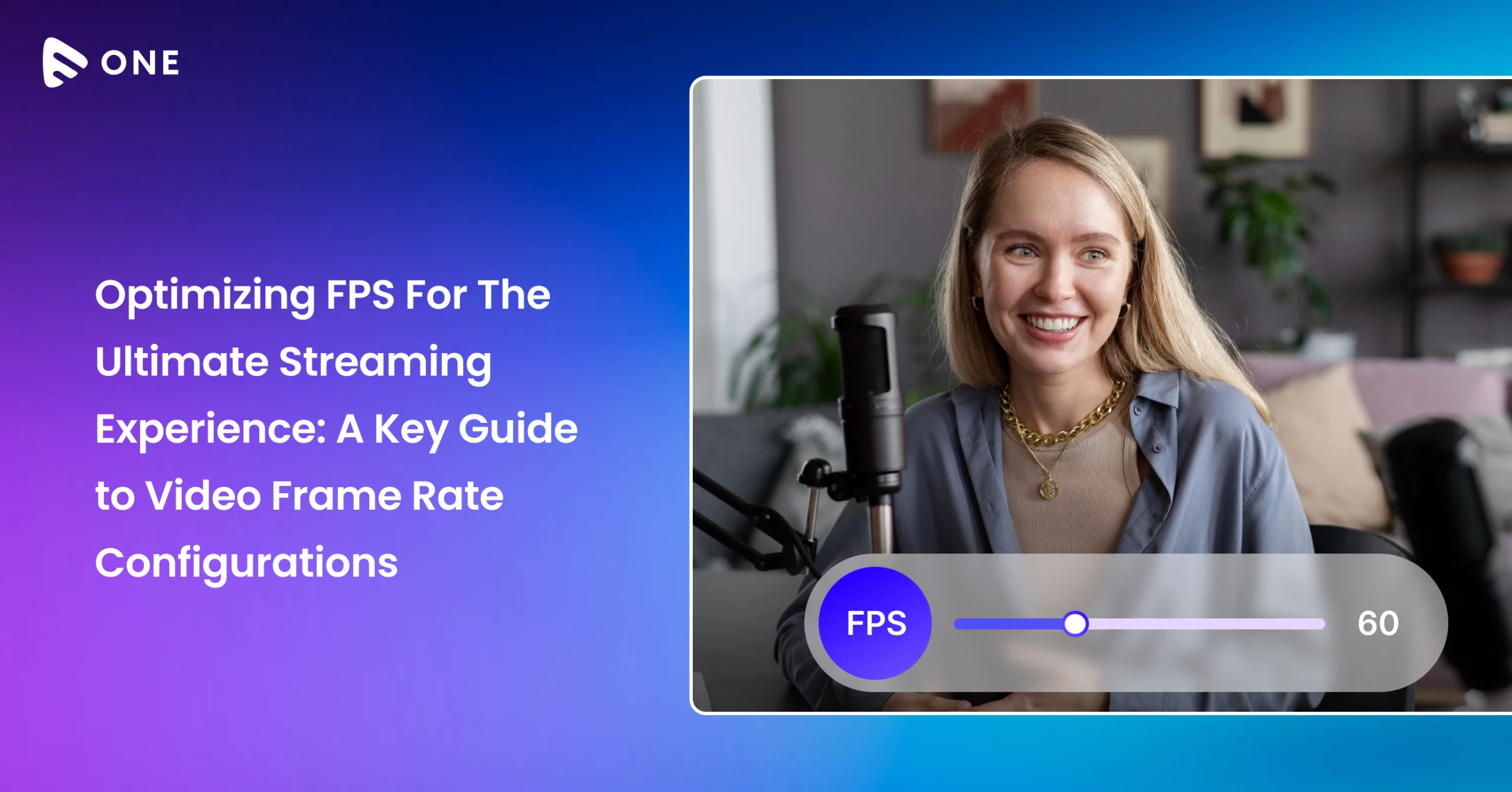Video frame rate is one of the key factors that helps in delivering high-quality, immersive content, critical to maintaining viewership in this competitive streaming market. However, it is often overlooked by streamers due to its complex technicalities.
In this blog, we’ll directly dive into the core aspects of video frame rates, their impact on streaming quality, and how it is related to video resolution and bitrate. We will also specify the modern streaming protocols used by Muvi to optimize the frame rate standards and enhance video streaming experiences across a wide variety of content, network conditions, and devices.
No-buffering! No-lag streaming with Muvi One – Check for yourself.
Start your free trial
What Is Video Frame Rate or Frames Per Second (FPS)?
Video Frame Rate refers to the number of individual still images displayed over a second in a video playback. The calculation of frame rates is expressed in frames per second or FPS. The most common frame rates used in today’s streaming technology are 24 FPS, 30 FPS, 60 FPS, 120 FPS or higher.
Every video that we stream on the internet is a collection of still frames played in quick succession. When these bundled images are played back at a certain speed, they appear as a continuous motion to the human eye and accordingly, our brain perceives them as a video.
For example, if a video is streamed at 60 fps, then it displays 60 still images per second. The video experts say, the more the no. of still frames displayed in a second, the more realistic and smoother the motion will be.
Movies, known for their cinematic feel, are often produced at 24 FPS, while high-motion videos like sports or live broadcasting are typically streamed at 60 FPS or higher for a seamless video experience.
Does Frame Rate Affect Streaming Video Quality?
Yes, frames per second matter a lot to video quality. Videos with lower frame rates i.e. 24 FPS may appear blurry or choppier, particularly for quick transitions.
However, a video when produced and streamed at a higher frame rate results in a smoother transition between frames, reducing the lags and motion blur. This greatly improves the viewing experience, especially for fast-paced content such as video game streaming, action sequences, and live sports streaming.
With a higher frame rate, viewers are less likely to witness stuttering, jerky, or blurred video, leading to a more enjoyable and immersive streaming experience.
But again, the higher frame rate videos need more bandwidth to maintain the video quality. If the bandwidth requirement is not met at the user’s end due to variable internet speed or connection, the video quality won’t be smooth. Well, video frame rates have their own sets of plus and minus, which we will learn in detail later in the blog.
Do you know Muvi’s OTT platform supports Adaptive Bitrate Streaming technology to deliver high frame rate videos keeping the bandwidth consumption as minimum as possible? Read more!
What Are The Most Commonly Used Video Frame Rates?
In the early video eras, FPS values like 12 & 16 frames per second were used to create a motion perception. With the advent of sound technology in videos, filmmakers upgraded the FPS values to 24 and rated it as the standard frame rate for cinematic movies. Anything below this value results in distorted video quality and hence not considered today.
24 FPS: This is the bare minimum frame rate to record video ensuring swift motion. This video frame rate is used mostly for films and TV shows.
30 FPS: This frame rate provides a smoother transition compared to 24 FPS. Hence, it is mostly considered the standard video frame rate for television, live broadcasting, and also for online videos.
60 FPS: This video frame rate is considered a high-speed frame rate as it delivers incredibly smooth and crisp motion without any blur. 60 fps is ideally used for producing video games, high-definition videos, and fast action sequences.
120 FPS: This fast-paced frame rate produces 120 frames per second, which is great for slow-motion playbacks like popping a water balloon or a bullet moving in slow motion. 120 Fps is also ideal for recording video games with fast and furious action scenes.
How To Choose The Best Frame Rate For Video Streaming?
Every frame rate yields a specific video output. So, what’s the best video frame rate actually depends on what you’re trying to stream. Here are several factors that greatly influence the frame rate and hence are must-have considerations when choosing the best frame rate standards for high-quality video streaming.
- Video Type: Different video styles demand different frame rate configurations. The video frame rate that’s ideal for streaming cinematic movies is not suitable for online game streaming. Like that for live TV broadcasts, the frame rate needs are different from the slow-motion shots.
- Video Delivery Intent: On which devices, users will be streaming your high-quality videos plays an important factor in determining the video frame rate. Whether you want to optimize fps for mobile streaming, Smart TVs, or gaming consoles, accordingly you need to configure the frame rates. Remember to pick a frame rate that your user’s devices can handle, or else the streaming experience will be affected.
- Streaming Platform Compatibility: What platform you’re using for streaming videos also decides the frame rate. If it’s an online streaming platform like YouTube, you need to abide by YouTube’s guidelines, i.e. use the same fps settings at which the video was recorded. If you are using your own-branded streaming app built with a Muvi-like end-to-end OTT platform, you can manually configure your video frame rate as you need.
- Movement/Motion in Video: The amount of motion involved in your video is another key factor to consider when choosing the right video frame rate. The more the movement, the higher the frame rate is required. For example, sports streaming would need higher fps settings to deliver crisp and clear displays in slow motion while a movie with dialogues and sound would need lower frames per second like 24 fps.
- Internet Connectivity: Internet speed matters to frame rate only when you are live streaming an event or broadcasting scheduled TV content. Stable and high-speed internet connectivity supports a higher frame rate i.e. videos with 60/120 fps and ensures a smooth viewing experience. Any fluctuation in internet connection would drop the video frame rates and may result in frequent buffering, leading to low-quality video streams.
Before jumping to any decision on video frame rate, it’s recommended to understand the very purpose of video and the way it is being delivered. Considering the above key factors collectively would give you the correct answer to what is the best frame rate for streaming high-quality videos.
Experts also suggest recording videos at a higher frame rate for precision in quality and flexibility during post-production.
Leverage Muvi One’s intuitive OTT platform for the best frame rate settings. Sign up now
Recommended Frame Rates For Different Video Formats
Each frame rate caters to a specific video format or purpose. To determine which frame rate is best for your video stream, please consider the following frames-per-second fps configurations.
- For On-demand Movie Streaming: The recommended video frame rate for movies is 24 fps. It provides a classic cinematic look and feel, which is great for storytelling.
- For Live TV broadcasts: The optimal video frame rate for live TV broadcasts i.e. news and scheduled TV shows is 30 fps. It ensures smoother motion transitions between the frames without being overly demanding in terms of bandwidth.
- For eSports Streaming: Professional gamers ideally live stream their high-action gameplay at 60 fps. At such higher frames per second, the scope of motion blur is greatly reduced.
- For Live Sports Streaming: The ideal video frame rate for sports streaming is 60 fps. As sports matches require replays in slow motion for decision-making, they are often recorded at 60 fps and also streamed at the same time for more fluidity in fast-moving content.
- For Ultra Slow-Motion Videos: The recommended video frame rate for high-definition and slow-motion content is 120 fps and beyond. Such higher frame rates allow creators to stream videos with special effects and incredible detailing.
How Video Frame Rate, Resolution, And Bitrate Are Related?
The concept that videos with higher frames per second look better and smoother to stream depends on other factors like video resolution and bitrate. These three factors are interconnected and collectively determine the overall video quality, storage size, and bandwidth consumption during streams.
Video resolution represents the dimensions of the video in terms of pixels. For example, 1280 * 720 for HD videos. Higher-resolution videos carry more pixels in each frame and hence deliver more visual detail.
Bitrate on the other hand refers to the amount of data transmitted per second and is expressed in terms of Kbps or Mbps. Higher bitrate delivers better video quality but needs more bandwidth and storage for a video stream.

But how these three core elements of a video are interrelated? Let’s understand.
A video with a higher frame rate, say 60 fps when combined with high resolution, say 4K (3840 * 2160), delivers the best quality streaming experience, but ultimately its bitrate goes up. To stream a video with a high bitrate value requires more bandwidth.
The problem happens when such a high bandwidth need doesn’t meet the bandwidth available at the viewer’s end. Though the video is well-produced with all the components on the higher side, still it fails to deliver quality streaming as the user’s device or internet connection doesn’t match the requirements.
Balancing Video Frame Rate, Resolution, And Bitrate For Optimized Streaming
Playing with these variables is a bit tricky, but once you understand the mechanism behind video frame rate, resolution, and bitrate, you can successfully stream videos without compromising quality. It’s very important to balance these three variables to deliver high-quality video content while managing the storage and bandwidth efficiently.
If the video frame rate and resolution both are on the higher side, say 60 fps and 4k, the bitrate will also be higher, demanding significant bandwidth as well as server storage. Hence, either you have to lower down your frame rate or resolution to keep a moderate bitrate.
In this case, we can try out 30 fps and 4k or 60 fps and 1080p configurations for minimizing the bitrate. The goal here is to optimize fps and resolution in such a way that it will neutralize the bandwidth consumption at the user’s end without degrading the video quality.
How Muvi One Optimizes Video Frame Rate For Seamless Streaming Experiences?
Muvi One, the all-in-one streaming platform, uses modern streaming protocols to automatically balance video frame rate, resolution, and bitrate, based on the real-time network connection and device’s capability at the user’s end.

When there is a connection fluctuation in the user’s network, the platform auto-analyzes and instantly reduces the frame rate and resolution settings while maintaining visual fidelity. Such variability regulates the sudden drop in video quality and optimizes the video delivery as per bandwidth requirement.
Let’s understand how it’s happening.
- Adaptive Bitrate Streaming: Higher frame rates require more bandwidth, so it is important to balance video resolution and video frame rate based on the user’s network. Here comes the role of Adaptive Bitrate Streaming which dynamically adjusts the video quality (including frame rate, resolution, and bitrate) based on the available bandwidth. Muvi One’s platform supports adaptive bitrate streaming protocols like HLS and DASH for automatically scaling the best possible frame rate and resolution based on the viewer’s current network conditions.
- Advanced Compression and Encoding Techniques: Muvi One’s platform has industry-standard codecs like HEVC (H.265) and H.264 that ensure efficient video compression while maintaining video quality. Due to such high-level compression techniques, the platform dynamically reduces the file size and bandwidth consumption for videos with higher frame rates and resolution. Also, thanks to advanced encoding profiles, all the videos are encoded in multiple formats and frame rates, making them appropriate for seamless streaming based on the user’s bandwidth requirements.
- Customizable Video Frame Rate Configurations: Muvi One is the only OTT platform where the admin can customize the frame rate and resolution directly from the dashboard without involving any tech guy. For instance, you can select higher frame rate standards i.e. 60 fps for sports streaming while using a lower frame rate like 30 fps for on-demand movie streams. With this level of custom control from the admin panel, it is easier to stream videos at optimal frame rate, ensuring maximum viewer engagement.

- Multi-Device Playback: Muvi’s built-in ABR transcoding feature automatically adjusts frame rate and resolution based on the user’s device. Whether the viewer is streaming video on a mobile phone, desktop, tablet, or smart TV, the platform ensures multi-device compatibility with smooth video playback. This technology is important for ensuring a consistent streaming experience across a range of devices, especially for high-end 4K smart TVs.
So, when a user’s internet connectivity is good and using a smart device for video streaming, the platform automatically delivers a stream at a higher resolution with a higher frame rate and bitrate, i.e. 1080p at 60 fps. However, when the bandwidth is limited, the system intelligently reduces the resolution and lowers the frame rate and bitrate, ensuring the stream doesn’t lag or buffer.
Start Your Hassle-Free Streaming Journey with Muvi Today
At Muvi, we understand the importance of optimizing video frame rates for the ultimate streaming experience. By leveraging advanced encoding & transcoding, adaptive bitrate streaming, and multi-device compatibility, Muvi ensures each stream is delivered at optimal frame rate and resolution, balancing both quality and performance.
So, whether you are streaming movies in the cinematic standard of 24 fps or live gaming events at 60 fps or beyond, you can rely on Muvi to auto-optimize frame rate and deliver smooth video quality to viewers, despite their geography, device, and network strength.
Take full control of your video encoding configurations only with Muvi One. Sign-up!!
You May also like:
How to Find the Right Bitrate for Streaming?
What is Video Bitrate and Why is it Important for Live Streaming?
What’s the Best Video Bitrate for Streaming?
Video Encoding and Bitrate Optimization Techniques for Live Streaming
Adaptive Bitrate Streaming: Simplified for One & All


















Add your comment